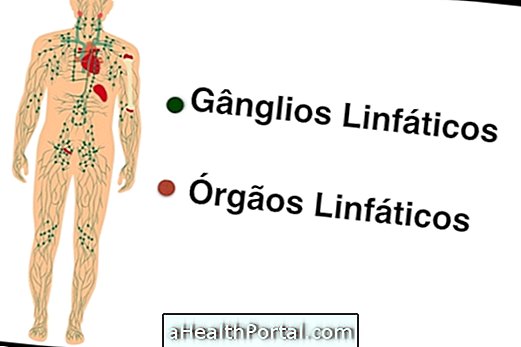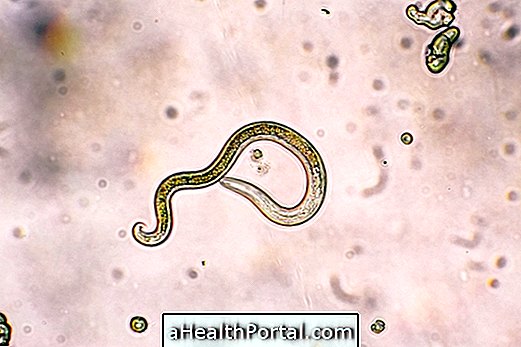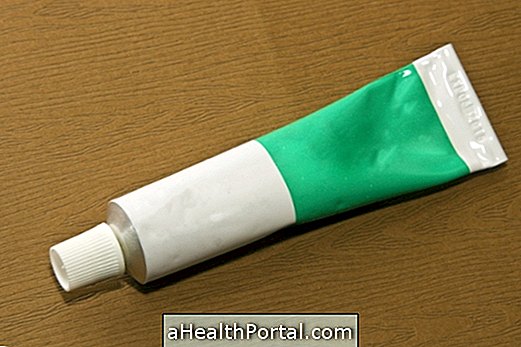Treatment of erysipelas can be done through the use of antibiotics in the form of tablets, syrups or injections prescribed by the physician for about 10 to 14 days, as well as taking care of resting and elevating the affected limb to help deflate the area.
When erysipelas is not serious treatment can be done at home, but there are situations where it is necessary to go into hospital with antibiotics directly into the vein, as in cases of very large lesions or affecting sensitive areas such as the face, for example.
Erysipelas is a skin infection that causes red, inflamed and painful lesions that can develop blisters and purplish areas, caused by a bacterium called Streptococcus pyogenes . Although it is more common in people over 50 and obese, erysipelas can affect anyone, especially when there is a chronic swelling or presence of skin wounds. Learn more about what causes and how to identify erysipelas.

Antibiotics for Erysipelas
Treatment for erysipelas lasts for about 10 to 14 days, and antibiotics that may be prescribed by your doctor include:
- Penicillin, which is the most used;
- Amoxicillin;
- Cephradine;
- Cefadroxil;
- Ampicillin;
- Ceftriaxone;
- Ciprofloxacin, when more than one type of bacteria is suspected, which is more common in diabetics.
For those who are allergic to Penicillin, your doctor may recommend other options such as Erythromycin, Clarithromycin, or Clindamycin.
It is very important to follow the treatment strictly to avoid the appearance of complications, such as chronic lymphedema or recurrent erysipelas.
Ointment for erysipelas
In the case of erysipelas bullous, in which a wet lesion is formed, with bubbles and transparent contents, topical antimicrobial treatment such as 2% fusidic acid or 1% sulfadiazine may be associated with the treatment.
When to stay in the hospital
There are situations that may become more serious and pose a risk to the health of the person, and in such cases, it is recommended that the patient stay in hospital with the use of antibiotics in the vein, and a more careful monitoring. The situations that indicate hospitalization are:
- Seniors;
- Presence of serious lesions, with blisters, areas of necrosis, bleeding or loss of sensation;
- Presence of signs and symptoms that indicate disease severity, such as drop in blood pressure, mental confusion, restlessness or decreased amount of urine;
- Presence of other serious diseases such as heart failure, impaired immunity, liver failure or advanced lung diseases, for example.
In these cases, antibiotics are indicated which can be applied to the vein and, in some cases, with greater potency, such as procaine Penicillin, Ampicillin, Cefazolin, Clarithromycin, Imipenem or Vancomycin, for example, which are indicated by the doctor depending on the need for each patient.
Home Treatment Options
During treatment of erysipelas, some attitudes that may aid in recovery include staying with the affected limb elevated, which facilitates venous return and decreases swelling.
It is also recommended to remain at rest during recovery, to keep well hydrated and to keep the edges of the lesion clean and dry. It should be avoided to place in the region homemade ointments or other substances not indicated by the doctor, as they can disrupt the treatment and even worsen the injury.
How to Prevent Erysipelas
To prevent erysipelas, it is necessary to decrease or treat conditions that increase your risk, such as losing weight in case of obesity and treating diseases that cause chronic swelling of the limbs, such as heart failure or venous insufficiency. If skin sores develop, they should be kept clean and dry to prevent contamination with bacteria.
For people who have erysipelas that recur repeatedly, the doctor may indicate the use of antibiotics as a prevention of new infections, for example with Penicillin or Erythromycin.























